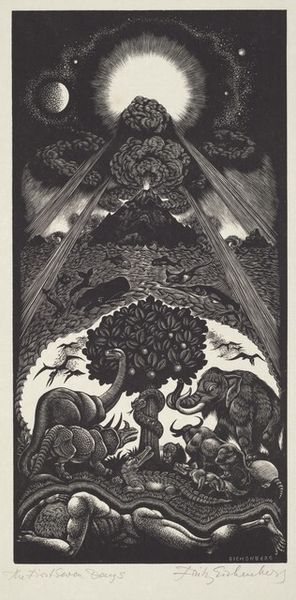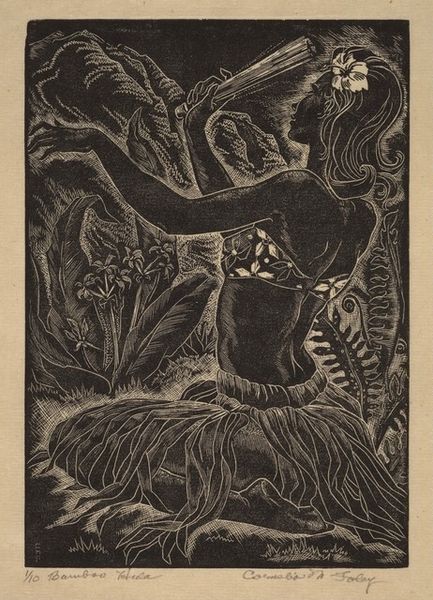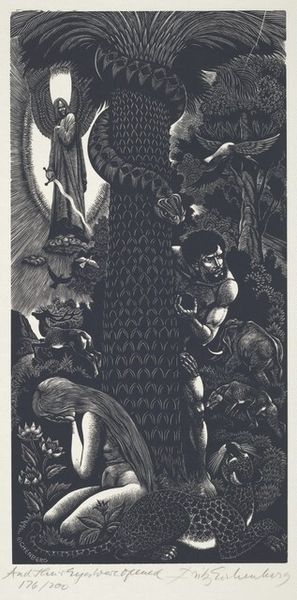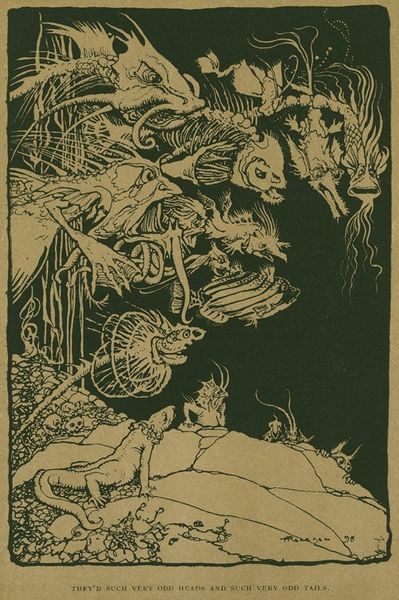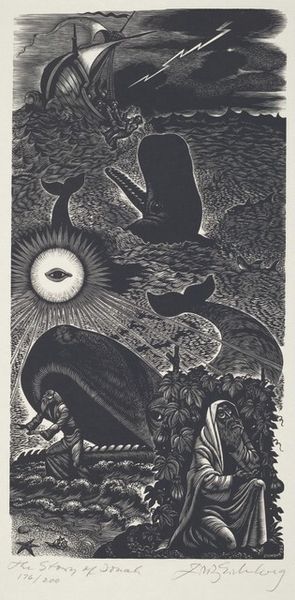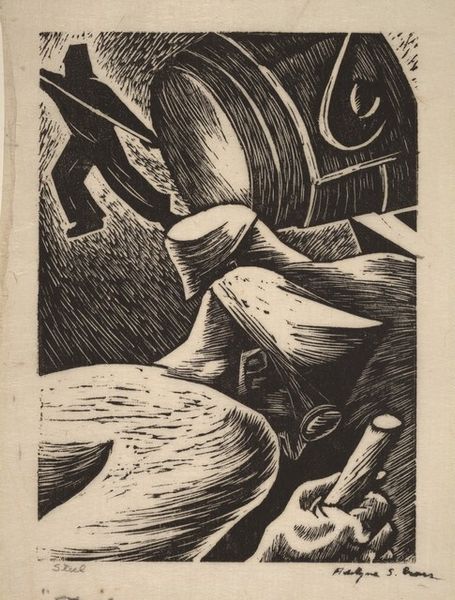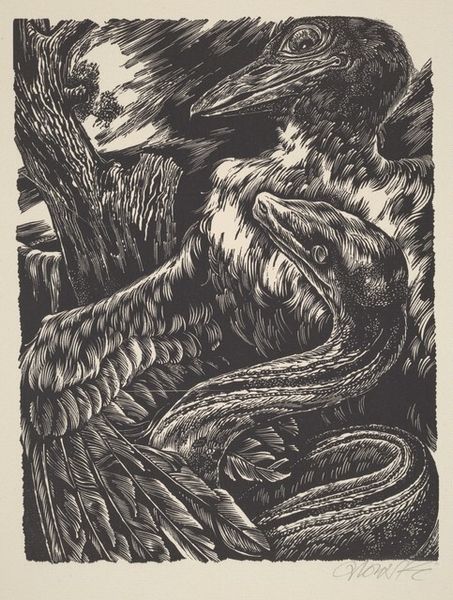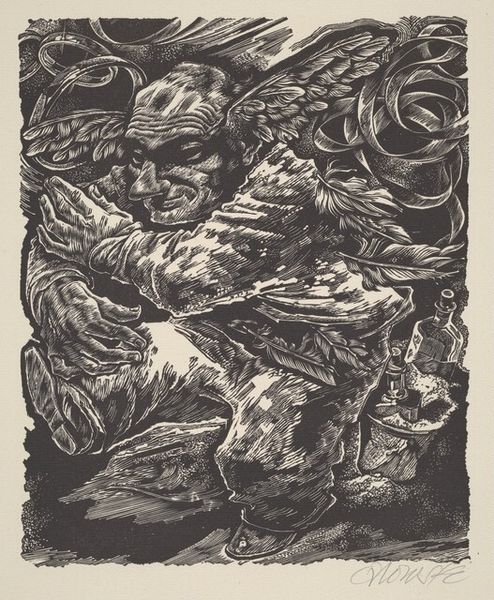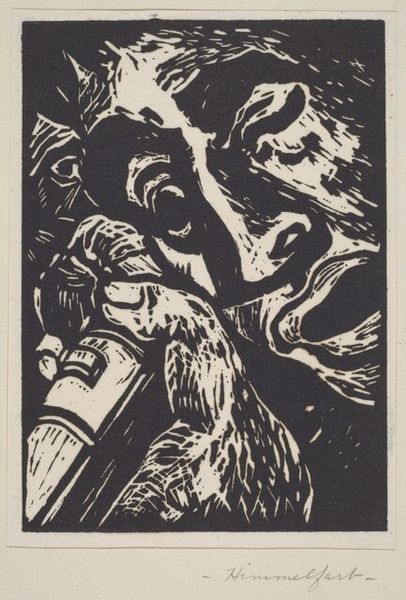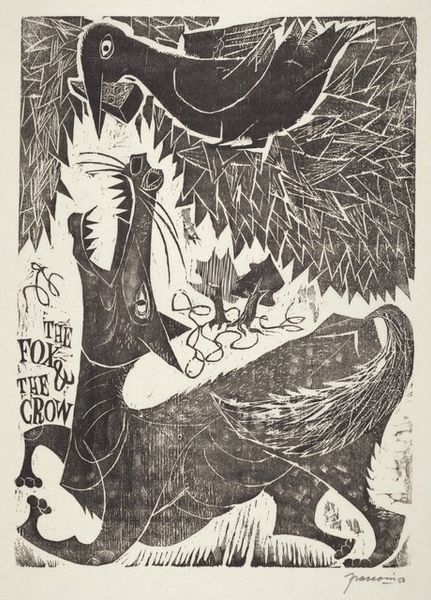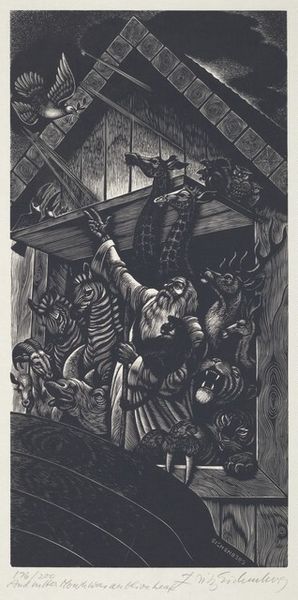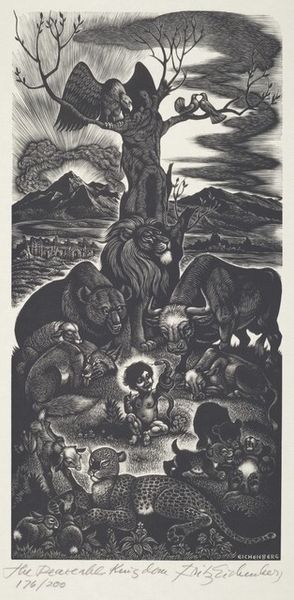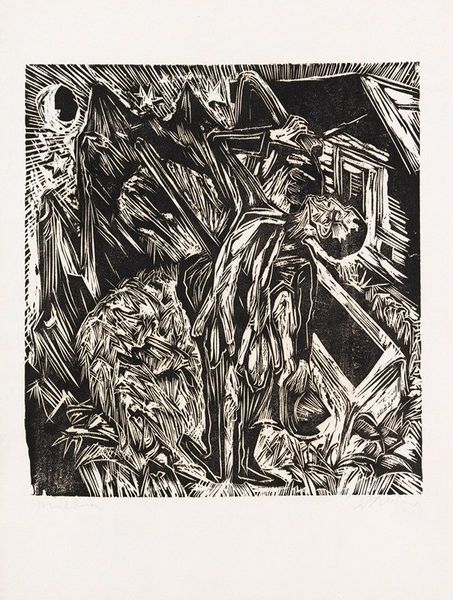
print, woodcut
#
ink drawing
#
pen drawing
# print
#
landscape
#
figuration
#
woodcut
Dimensions: image: 25.4 × 14.3 cm (10 × 5 5/8 in.) sheet: 31.8 × 24.1 cm (12 1/2 × 9 1/2 in.)
Copyright: National Gallery of Art: CC0 1.0
Curator: Welcome. We are looking at a woodcut on paper, tentatively titled "Two Horses in a Hilly Landscape, Ireland," created by John B. Flannagan around 1930. Editor: My first thought? It's incredibly cozy! The heavy lines, the way those horses huddle together, the little cottage tucked in the background… I want to be *there*, preferably with a warm blanket and a book. Curator: The romantic depiction of rural life echoes a larger cultural phenomenon in the early 20th century, with artists like Flannagan seeking authenticity and spiritual solace in simpler, agrarian settings, away from rapid industrialization. Editor: It’s interesting you mention the “romantic depiction,” because the stark contrast of the black ink gives the scene a slightly ominous, dramatic feeling as well. Like a storm's coming in. Curator: Absolutely. That tension is deliberate. Flannagan was deeply engaged with European modernism, particularly the German Expressionists, who utilized woodcuts for their powerful, emotionally charged imagery and social critique. This artwork speaks to a longing for something beyond modern society, but the sharp lines hint at a troubled world, especially considering this piece was created as global conflicts grew. Editor: See, I read that darkness as comforting! It’s honest, a raw, almost primal feeling. These horses aren’t just pets; they are connected to the land in a fundamental way. I like that there's also a sort of intimacy; it really captures the horses and their presence in that quiet moment of affection. Curator: Flannagan often drew on personal experiences, having traveled extensively. In that light, it's possible this woodcut embodies not only cultural observations of Irish society, but reflects a connection to simpler, rural ways of living. Editor: It's all in the texture. The way he uses those carved lines to suggest form, movement, mood, especially the rugged Irish hills—it elevates what could be a mundane scene. It's not just a pretty picture of Ireland; it’s alive with feeling. Curator: Yes, Flannagan sought to represent profound human, and indeed animal experiences in his work, even using his preferred method of direct carving to give a greater sense of authenticity to his craft. Editor: For me, it's a reminder that art isn’t always about shiny, perfect things. It's about finding beauty, and perhaps a bit of comfort, even in the harsh realities of the world. Curator: And for me, an opportunity to think about art's function to explore these emotions in response to large social shifts. Thank you for your thoughts.
Comments
No comments
Be the first to comment and join the conversation on the ultimate creative platform.
